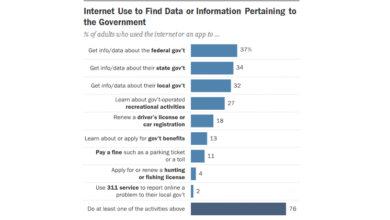
Ransomware Attack Miami Beach Police & Florida Elections
Ransomware attack on Miami Beach police and Florida county election systems – it sounds like a movie plot, right? But this terrifying scenario recently became a harsh reality, highlighting the vulnerability of even critical public institutions to cybercrime. This post delves into the impact of this attack, exploring the disruption to essential services, the potential long-term consequences, and the crucial questions it raises about cybersecurity in the public sector.
We’ll look at the specific challenges faced by both law enforcement and election officials, comparing this incident to similar attacks and examining the steps being taken to recover and prevent future incidents. Get ready for a deep dive into the digital battlefield!
The attack on the Miami Beach Police Department (MBPD) immediately crippled several key functions, affecting emergency response times and hindering ongoing investigations. Simultaneously, the vulnerability exposed in the Florida county election system raises serious concerns about election integrity and voter confidence. This dual attack serves as a stark reminder of the interconnectedness of our digital infrastructure and the potential cascading effects of successful cyberattacks.
We’ll examine the specific vulnerabilities exploited, the security measures currently in place (or lacking), and the lessons learned from this and similar incidents. The implications are far-reaching and demand a comprehensive analysis.
Miami Beach Police Department Ransomware Attack Impact

The ransomware attack on the Miami Beach Police Department (MBPD) had immediate and far-reaching consequences, disrupting essential services and raising serious concerns about public safety and community trust. The incident serves as a stark reminder of the vulnerability of even well-established institutions to sophisticated cyberattacks.The immediate effects of the ransomware attack were widespread and crippling. Initial reports suggested a significant portion of the department’s computer systems were compromised, rendering them inaccessible.
This had a cascading effect on numerous critical operations.
Disruption of Law Enforcement Services
The ransomware attack significantly hampered the MBPD’s ability to perform its core functions. Emergency response times were likely affected due to difficulties in accessing crucial information like dispatch records, crime databases, and officer locations. Investigations were also severely impacted, with access to evidence, witness statements, and case files compromised. The inability to quickly access critical information could have potentially jeopardized ongoing investigations and delayed the apprehension of criminals.
Furthermore, internal communication systems were likely affected, hindering coordination amongst officers and departments. The attack’s impact extended beyond immediate response, impacting long-term investigative work and data analysis.
Long-Term Consequences for Public Safety and Community Trust, Ransomware attack on miami beach police and florida county election
The long-term consequences of this attack extend beyond the immediate disruption of services. The breach of sensitive data, including potentially personal information of victims and witnesses, poses significant risks to public safety and individual privacy. Restoring public trust after such an incident requires transparency, effective communication, and demonstrable efforts to improve cybersecurity infrastructure. The cost of remediation, including system restoration, data recovery, and potential legal liabilities, could be substantial, potentially diverting resources from other crucial areas of public safety.
The incident may also lead to increased scrutiny of the MBPD’s cybersecurity practices and could necessitate significant investments in upgrading its systems and training its personnel. The reputational damage to the MBPD and the erosion of public trust could take years to repair.
MBPD Operational Capabilities: Pre- and Post-Attack
The following table compares the operational capabilities of the MBPD before and after the ransomware attack. The recovery timeline is speculative, based on the complexity of such incidents and typical recovery efforts in similar cases. Actual recovery times can vary significantly.
| Service Area | Pre-Attack Status | Post-Attack Status | Recovery Timeline (Estimated) |
|---|---|---|---|
| Emergency Dispatch | Fully Operational | Partially Operational or Severely Impaired | Days to Weeks |
| Crime Databases | Fully Accessible | Inaccessible or Partially Accessible | Weeks to Months |
| Investigations | Full Capacity | Significantly Reduced Capacity | Months |
| Internal Communications | Fully Functional | Disrupted or Unavailable | Days to Weeks |
| Public Records Access | Fully Accessible | Inaccessible or Limited Access | Weeks to Months |
Florida County Election System Vulnerability
The vulnerability of Florida’s county election systems to ransomware attacks is a serious concern, impacting not only the smooth running of elections but also the public’s trust in the electoral process. The interconnected nature of modern systems, coupled with the often-limited cybersecurity resources available at the county level, creates a significant risk. A successful attack could have far-reaching consequences, potentially altering election results and undermining the democratic process.The potential for exploitation lies in several areas.
Outdated software and hardware, insufficient network security, and a lack of employee cybersecurity training all contribute to a weak security posture. Furthermore, the reliance on less secure systems and a lack of comprehensive data backups exacerbate the potential damage from a ransomware attack. The consequences of such an attack are severe, potentially leading to delays in election results, compromised voter data, and a significant erosion of public trust in the integrity of the election.
Vulnerabilities in Florida County Election Systems
Several key vulnerabilities exist within Florida’s county election systems that could be easily exploited by sophisticated ransomware attacks. These vulnerabilities stem from a combination of outdated technology, insufficient security protocols, and limited resources dedicated to cybersecurity. For instance, many counties still rely on older voting machines and software that lack robust security features, making them susceptible to malware and ransomware.
Furthermore, inadequate network security, such as a lack of firewalls or intrusion detection systems, can leave these systems exposed to external threats. The lack of regular security audits and penetration testing further increases the risk. Finally, a lack of comprehensive employee training on cybersecurity best practices can lead to human error, such as clicking on malicious links or falling prey to phishing scams, opening pathways for ransomware to infiltrate the system.
Implications of a Ransomware Attack on Election Integrity and Voter Confidence
A successful ransomware attack on a Florida county election system would have devastating consequences. The most immediate impact would be the disruption of the electoral process. The encryption of voting data could delay or even prevent the timely reporting of election results, causing widespread confusion and potentially triggering legal challenges. Beyond the immediate disruption, a ransomware attack would severely damage voter confidence.
If voters believe that their ballots have been tampered with or that the election results have been compromised, it could lead to a decline in voter turnout and a loss of faith in the democratic process. The release of sensitive voter data, such as personal information and voting records, could also lead to identity theft and other serious privacy violations.
The long-term damage to public trust would be significant and difficult to repair.
Security Measures Currently in Place to Protect Election Systems
While the specific security measures vary across Florida’s counties, some common practices include the use of firewalls, antivirus software, and regular software updates. Many counties also conduct periodic security assessments and employee training programs. However, the effectiveness of these measures is often limited by budgetary constraints and a lack of specialized cybersecurity expertise. The decentralized nature of the election system, with each county managing its own infrastructure, makes it challenging to implement consistent and robust security standards across the state.
The reliance on legacy systems further complicates the implementation of modern security protocols. Furthermore, the lack of standardized cybersecurity protocols across all counties hinders the ability to share best practices and effectively address emerging threats.
Hypothetical Ransomware Attack Scenario
A hypothetical ransomware attack could unfold as follows: An attacker could initially target county election officials through a phishing email containing a malicious attachment. Once the attachment is opened, ransomware would encrypt critical election data, including voter registration databases and voting machine software. The attacker would then demand a ransom in exchange for the decryption key. Simultaneously, the attacker might attempt to exfiltrate sensitive voter data to further leverage the attack and cause damage.
The county’s ability to respond effectively would depend on the quality of its backup systems and the availability of skilled cybersecurity personnel. The attack could easily cripple the election process and cause significant damage to the public trust. This scenario is not hypothetical; similar attacks have occurred in other parts of the world, highlighting the very real threat to election integrity.
Comparative Analysis of Cyberattacks on Public Institutions

The ransomware attack on the Miami Beach Police Department, coupled with vulnerabilities exposed in the Florida county election system, highlights a growing concern: the increasing vulnerability of public institutions to cyberattacks. Analyzing this incident alongside other significant breaches allows us to identify recurring patterns, pinpoint weaknesses, and ultimately develop more robust cybersecurity strategies. This comparative analysis will explore the commonalities and differences in these attacks, emphasizing lessons learned and best practices for improved resilience.
The Miami Beach Police Department attack, while still unfolding at the time of this writing, shares similarities with numerous other ransomware incidents targeting government entities. These attacks often leverage phishing emails, exploiting vulnerabilities in outdated software, or utilizing sophisticated techniques to gain unauthorized access to sensitive data. The resulting disruption can range from operational paralysis to significant financial losses and damage to public trust.
Understanding these shared characteristics allows for a more proactive and effective approach to cybersecurity preparedness.
Comparison of the Miami Beach Attack with Other Significant Ransomware Attacks
The attack on the Miami Beach Police Department can be compared to several high-profile ransomware attacks against government agencies. For example, the 2021 attack on the Colonial Pipeline, a major fuel pipeline in the United States, resulted in widespread fuel shortages and demonstrated the potential for ransomware to disrupt critical infrastructure. Similarly, attacks on local governments, such as those experienced by various cities and counties across the country, have resulted in the disruption of essential services, including access to public records and online services.
While the specifics of each attack differ—the target, the ransomware variant used, and the extent of the damage—the underlying vulnerabilities and consequences often overlap significantly. The common thread is the exploitation of weaknesses in cybersecurity defenses.
Best Practices for Cybersecurity in Public Sector Organizations
Numerous best practices have emerged from past ransomware incidents. These include regular software updates and patching, robust multi-factor authentication, employee cybersecurity awareness training, and the implementation of robust data backup and recovery systems. Furthermore, the establishment of a comprehensive incident response plan, including regular simulations and drills, is crucial. Investing in advanced threat detection and prevention tools, such as intrusion detection systems and security information and event management (SIEM) systems, can also significantly enhance security posture.
Finally, strong collaboration and information sharing among government agencies at all levels is vital for collective learning and improved preparedness.
Key Factors Contributing to the Success or Failure of Ransomware Attacks
The success or failure of a ransomware attack against a public institution often hinges on several key factors:
The following points illustrate the importance of a multi-faceted approach to cybersecurity:
- Strength of Cybersecurity Defenses: Robust network security, including firewalls, intrusion detection systems, and endpoint protection, is crucial in preventing initial access. Weaknesses in these defenses significantly increase vulnerability.
- Employee Training and Awareness: Phishing emails remain a common entry point for ransomware. Regular training to recognize and avoid phishing attempts is essential. Human error remains a significant factor in many attacks.
- Data Backup and Recovery Capabilities: Regular and tested backups are critical. A robust backup strategy allows for quick recovery even if data is encrypted.
- Incident Response Plan: A well-defined and regularly tested incident response plan enables organizations to effectively contain and mitigate the impact of a ransomware attack.
- Patching and Software Updates: Prompt patching of software vulnerabilities is vital in preventing attackers from exploiting known weaknesses.
- Network Segmentation: Segmenting the network limits the impact of a breach. If one part of the network is compromised, the rest remains protected.
Types of Data Commonly Targeted in Ransomware Attacks on Government Agencies
Ransomware attacks on government agencies frequently target sensitive data, including:
The sensitivity and potential impact of compromised data necessitate a robust security posture.
- Personal Identifiable Information (PII): This includes names, addresses, social security numbers, driver’s license numbers, and other sensitive personal details of citizens.
- Financial Data: Bank account information, tax records, and other financial details are highly valuable to attackers.
- Healthcare Data: Medical records, including protected health information (PHI), are often targeted due to their high value on the dark web.
- Intellectual Property: Government agencies often hold valuable intellectual property, including research data and technological innovations, which are attractive targets for attackers.
- Election Data: Voter registration information, election results, and other election-related data are particularly sensitive and could be used for malicious purposes.
- Law Enforcement Data: Police records, investigation files, and other law enforcement data could be used to compromise ongoing investigations or endanger public safety.
Recovery and Mitigation Strategies: Ransomware Attack On Miami Beach Police And Florida County Election

The recovery from a ransomware attack on a critical infrastructure like the Miami Beach Police Department (MBPD) and Florida county election systems requires a multifaceted approach encompassing immediate response, long-term data restoration, and robust preventative measures. The process is complex, demanding collaboration between the affected entities, state and federal agencies, and cybersecurity experts. Successful recovery hinges on swift action, thorough investigation, and a commitment to strengthening future defenses.The MBPD’s recovery process likely involved several key steps, although specific details are often kept confidential for security reasons.
However, based on similar incidents, we can infer a general strategy. This would have started with immediate containment of the attack to prevent further spread of the malware. This involves isolating affected systems from the network and potentially shutting down certain services temporarily. Simultaneously, a thorough forensic investigation would have been launched to identify the source of the attack, the extent of data compromise, and the specific ransomware variant used.
MBPD Recovery Actions
The MBPD’s recovery likely included data restoration from backups. The quality and recency of these backups are crucial. If backups were compromised or outdated, the recovery process becomes significantly more challenging, potentially involving data recovery from offline backups or even attempting to decrypt affected files if a decryption key was obtained (perhaps through negotiation with the attackers, though this is risky and often discouraged).
The department would have also needed to rebuild affected systems and reconfigure network security. Finally, employee training on cybersecurity best practices would be critical to prevent future incidents.
Federal and State Agency Assistance
Federal agencies like the FBI and Cybersecurity and Infrastructure Security Agency (CISA) likely provided crucial support to the MBPD. Their expertise in digital forensics, threat intelligence, and incident response would have been invaluable. State-level agencies in Florida would have also played a vital role, coordinating resources and potentially providing financial assistance. This collaborative effort is typical in major cybersecurity incidents impacting critical infrastructure.
The sharing of threat intelligence between agencies is vital in preventing similar attacks elsewhere.
Preventing Future Attacks
Prevention is always better than cure. The MBPD and other Florida county systems will need to implement several measures to enhance their cybersecurity posture. This includes regularly updating software and operating systems to patch known vulnerabilities, employing multi-factor authentication (MFA) to secure access to sensitive systems, and implementing robust intrusion detection and prevention systems. Regular security audits and penetration testing will help identify weaknesses.
Moreover, comprehensive employee training programs focusing on social engineering tactics (phishing, etc.) and safe online practices are crucial. Investing in advanced threat detection technologies, such as endpoint detection and response (EDR) solutions, can help proactively identify and neutralize malicious activity. Finally, developing and regularly testing incident response plans are essential to ensure a coordinated and effective response in the event of future attacks.
Stages of Ransomware Attack Recovery
The recovery process can be visualized as a series of stages.A diagram could depict this as a flowchart. It would begin with the Incident Detection stage, where the attack is discovered. This is followed by Containment, where the spread of malware is stopped. Then comes Eradication, where the malware is removed. Next is Recovery, which involves restoring data from backups and rebuilding systems.
The Investigation stage follows, aiming to understand the attack’s source and methods. Finally, the Mitigation stage focuses on implementing preventative measures to avoid future attacks. Each stage would have key decision points, such as choosing the best recovery method or selecting appropriate security upgrades. The flowchart would visually represent the sequential nature of the process and the interconnectedness of the different stages.
Key actions taken at each stage would be described within each stage’s box in the diagram. For example, the Containment stage would detail steps like isolating affected systems and disabling network access.
Legal and Ethical Considerations
The recent ransomware attacks targeting the Miami Beach Police Department and Florida county election systems highlight a critical intersection of legal and ethical complexities. Responding to such attacks requires a delicate balance between protecting public safety, upholding the law, and preserving ethical principles. The decisions made in the aftermath can have far-reaching consequences for individuals, institutions, and the public trust.The legal implications of paying a ransom are multifaceted and often murky.
While seemingly a pragmatic solution to restore critical systems, paying ransoms can inadvertently fund further criminal activity, emboldening attackers and potentially violating various laws. Many jurisdictions have laws prohibiting transactions with known terrorist organizations or criminal enterprises, and paying a ransom could inadvertently fall under this umbrella depending on the specifics of the attack and the identity of the perpetrators.
Furthermore, the act of paying a ransom may not guarantee data recovery, and could even lead to further extortion attempts.
Legal Implications of Ransom Payments
Paying a ransom to cybercriminals carries significant legal risks. In some jurisdictions, it might be considered aiding and abetting criminal activity, potentially leading to legal repercussions for the paying entity. Additionally, regulations like the Office of Foreign Assets Control (OFAC) sanctions programs could prohibit payments to individuals or entities on sanctioned lists. The legal landscape surrounding ransom payments is constantly evolving, and legal counsel should be sought before making any such decision.
Internal investigations, as well as potential civil lawsuits from affected citizens, are further considerations. The potential for fines and reputational damage must also be weighed against the perceived benefits of regaining access to data.
Ethical Dilemmas Faced by Government Officials
Government officials facing ransomware attacks face a profound ethical dilemma. The imperative to protect public safety and maintain essential services often clashes with the legal and ethical ramifications of paying a ransom. The decision to pay can be viewed as rewarding criminal behavior, potentially setting a dangerous precedent. Conversely, refusing to pay could result in significant disruption of public services, potentially leading to more serious consequences.
The recent ransomware attacks on Miami Beach Police and a Florida county election system highlight the urgent need for robust cybersecurity. Building resilient systems requires efficient development, and that’s where exploring options like domino app dev the low code and pro code future becomes crucial. These advancements could help agencies like these build more secure and easily updatable applications, ultimately mitigating the risk of future ransomware incidents.
This requires a careful consideration of the potential risks and benefits, alongside the need for transparency and accountability. Public trust is paramount, and the decision-making process should be carefully documented and explained to the public.
Responsibilities of Public Institutions in Protecting Citizen Data
Public institutions have a fundamental responsibility to protect the data of their citizens. This responsibility extends beyond simply reacting to attacks; it necessitates proactive measures to prevent them. This includes robust cybersecurity infrastructure, employee training on security best practices, regular security audits, and incident response plans. The failure to adequately protect citizen data can lead to legal liability, reputational damage, and erosion of public trust.
Proactive investment in cybersecurity is not merely a cost; it’s an investment in public safety and the preservation of public trust.
Legal Frameworks Addressing Cybersecurity Incidents in the Public Sector
Several legal frameworks address cybersecurity incidents in the public sector. For instance, the Cybersecurity and Infrastructure Security Agency (CISA) in the United States provides guidance and resources for government entities. State and local governments often have their own cybersecurity laws and regulations. The General Data Protection Regulation (GDPR) in Europe imposes strict requirements on organizations handling personal data, including robust cybersecurity measures and notification requirements in case of breaches.
Compliance with these frameworks is crucial for public institutions to minimize their legal risks and fulfill their responsibility to protect citizen data. These regulations often include requirements for data breach notification, data security protocols, and incident response plans.
Epilogue
The ransomware attack on Miami Beach Police and Florida county election systems serves as a chilling wake-up call. It underscores the urgent need for robust cybersecurity measures in all public institutions, particularly those responsible for maintaining public safety and the integrity of democratic processes. While recovery efforts are underway, the long-term implications of this attack will undoubtedly shape future cybersecurity strategies and policies.
The lessons learned from this incident should inform a proactive and comprehensive approach to protecting our critical infrastructure from future cyber threats. This isn’t just about technology; it’s about safeguarding our communities and our democracy.
FAQ Section
What type of ransomware was used in the attack?
The specific type of ransomware used hasn’t been publicly disclosed yet, often to avoid giving the attackers publicity or providing information that could aid future attacks.
Was any ransom paid?
Whether a ransom was paid is usually kept confidential for security and legal reasons. Public disclosure could encourage future attacks and potentially impact ongoing investigations.
How long did it take to restore systems?
Full recovery timelines are typically not immediately released, as it depends on the complexity of the attack and the extent of data encryption. The process can take days, weeks, or even longer.
What are the long-term costs associated with this attack?
Beyond the immediate disruption, the long-term costs include system restoration, enhanced security measures, potential legal fees, and the damage to public trust and confidence.





